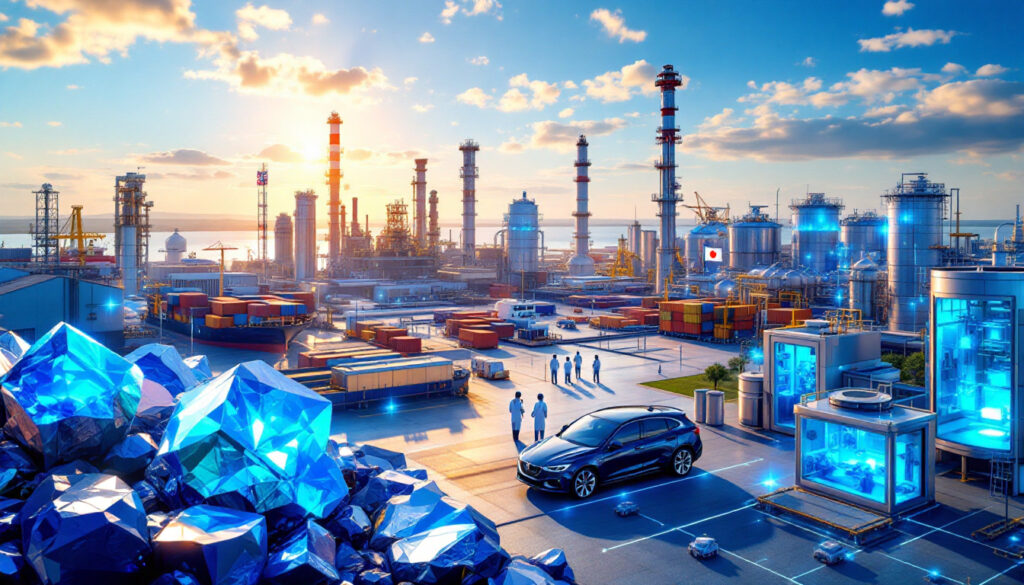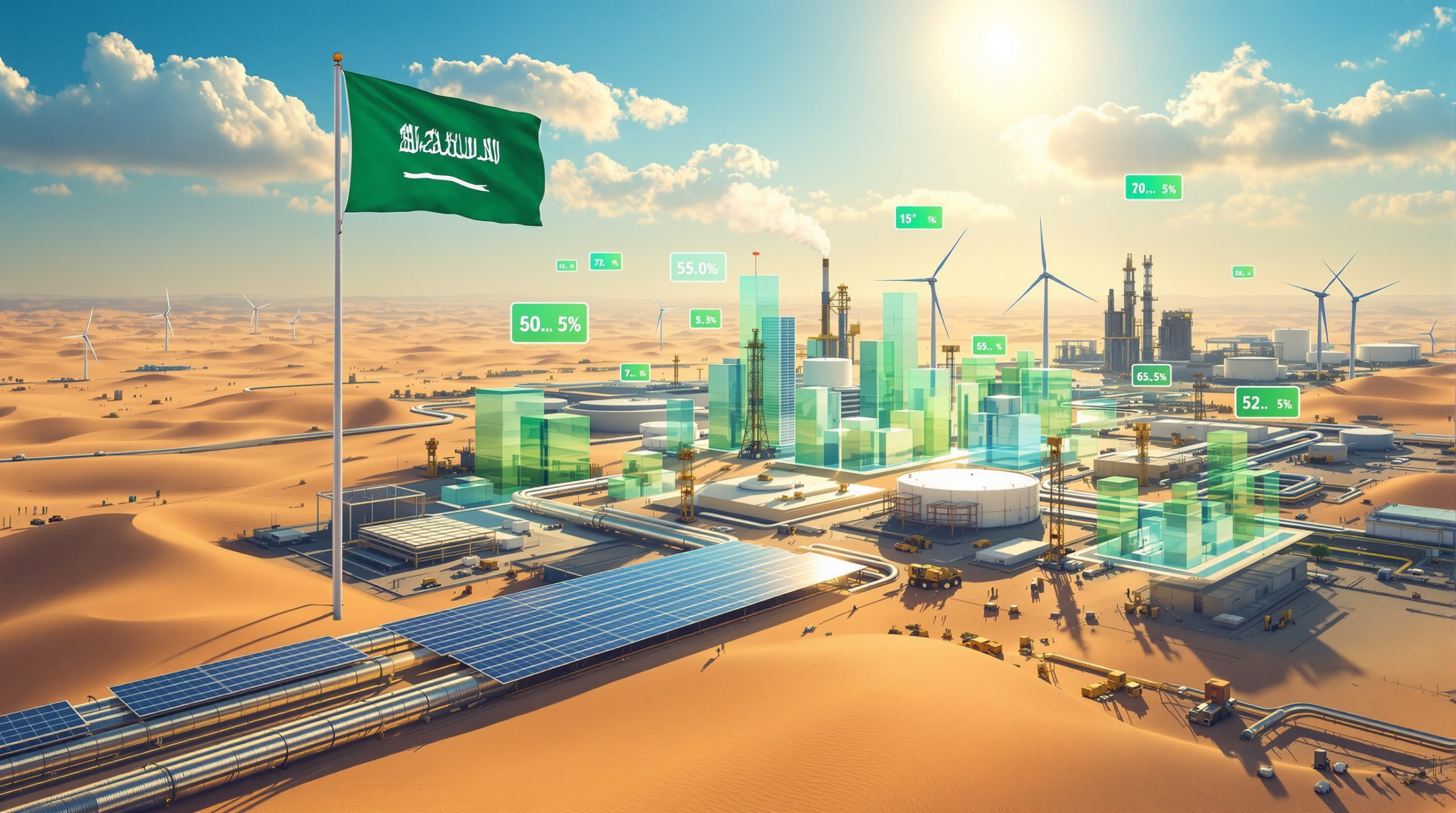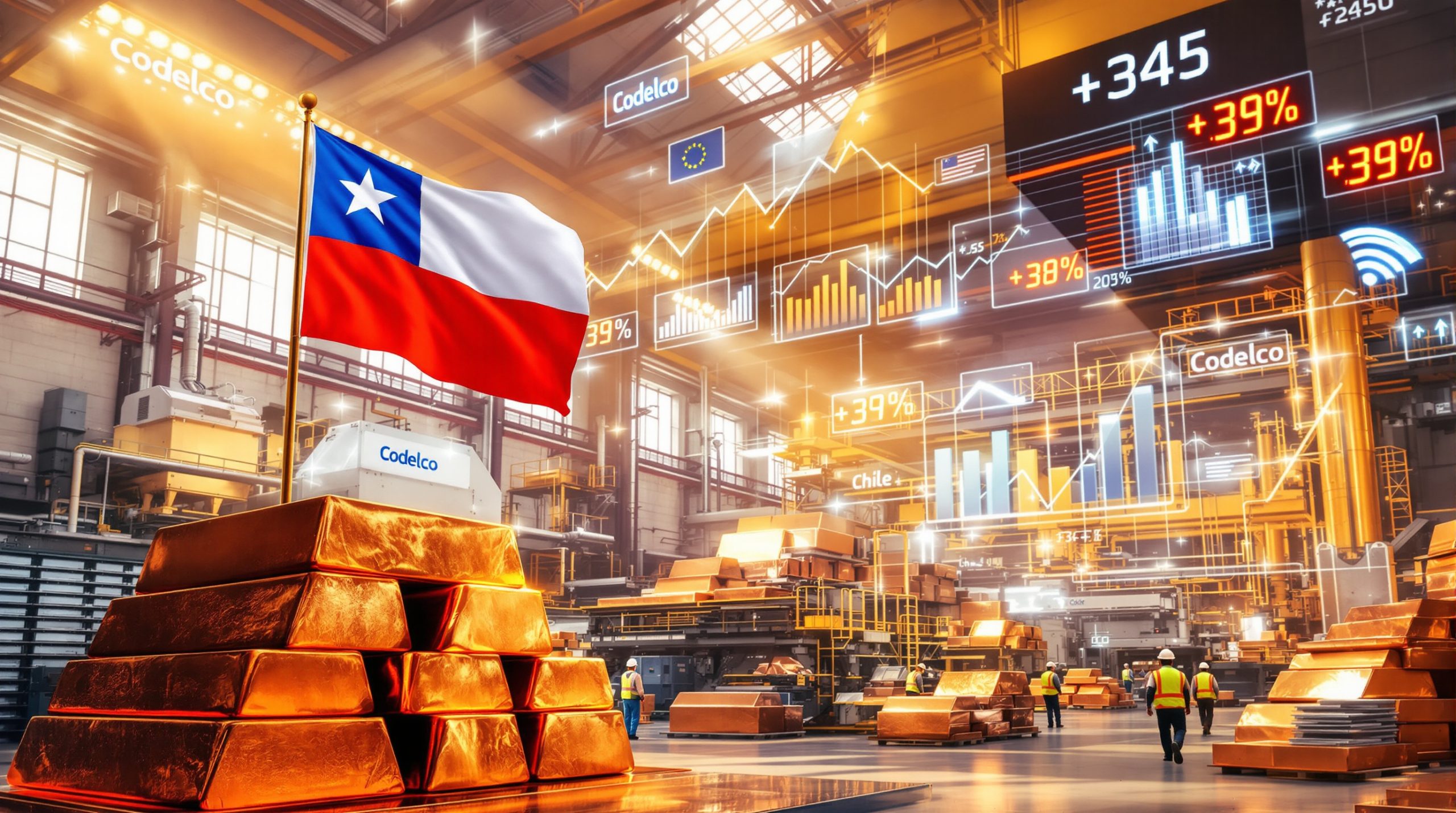What is the Glencore-Cobalt Blue Supply Agreement?
In a landmark deal that reshapes Australia's critical minerals landscape, Cobalt Blue Holdings has secured a three-year agreement with global mining giant Glencore to supply cobalt hydroxide feedstock for the Kwinana Cobalt Refinery (KCR). This strategic partnership ensures Glencore will provide at least 3,750 tonnes of cobalt hydroxide sourced from its Democratic Republic of Congo (DRC) operations, meeting approximately half of the refinery's feedstock requirements.
The agreement marks a significant milestone in Australia's push to establish domestic processing capabilities for battery minerals, reducing reliance on overseas refineries. The cobalt hydroxide will be sourced specifically from Glencore's Kamoto Copper Company and Mutanda Mining operations in the DRC, both recognized as world-class cobalt-producing assets.
Key Terms of the Supply Agreement
- Duration: Three-year contract with potential for extension
- Minimum Supply: 3,750 tonnes of cobalt hydroxide, representing approximately 1,500 tonnes of contained cobalt
- Source Operations: Kamoto Copper Company and Mutanda Mining in the DRC
- Purpose: Providing approximately 50% of the KCR's feedstock needs
- Supply Security: Establishes a reliable, ethically-sourced cobalt supply chain
Industry analysts note that securing consistent feedstock is typically one of the most challenging aspects of establishing new refining operations. By locking in half of its required supply through this agreement, Cobalt Blue has significantly de-risked the Kwinana project.
"The agreement with Glencore represents a critical foundation for the Kwinana Cobalt Refinery, ensuring reliable access to ethically-sourced cobalt hydroxide from established operations," noted a Cobalt Blue Holdings spokesperson.
Why is the Kwinana Cobalt Refinery Significant for Australia?
The Kwinana Cobalt Refinery represents a transformative development in Australia's critical minerals landscape. As a joint venture between Australian-listed Cobalt Blue Holdings and Japan's Iwatani Corporation, the facility will become Australia's first dedicated cobalt sulphate production plant, addressing a crucial gap in the domestic battery supply chain.
Located within Western Australia's premier industrial zone, the Kwinana Industrial Area, the refinery strategically positions Australia to capture more value from the global battery boom beyond simply exporting raw materials. The facility aligns perfectly with Australia's Critical Minerals Strategic Reserve, which emphasizes developing downstream processing capabilities to maximize economic returns from the country's mineral resources.
Strategic Importance of the KCR Project
- First-of-its-kind facility: Australia's inaugural cobalt sulphate plant for lithium-ion batteries
- Dual-market focus: Producing both battery-grade materials (≥20.5% cobalt sulphate) and defense-grade metals (≥99.8% purity)
- Supply chain resilience: Reducing dependence on Chinese processing facilities, which currently refine approximately 80% of global cobalt
- Regional development: Enhancing Western Australia's emerging battery minerals hub
- Strategic partnership: Strengthening Australia-Japan resource cooperation
The facility's location in Kwinana is particularly significant as the area is rapidly developing into a battery minerals precinct. The refinery will complement other battery material projects in the region, including lithium hydroxide production facilities, creating a concentrated hub of expertise and infrastructure.
The project also represents a strategic win for Australia's resource sovereignty, as it keeps more of the value chain onshore rather than shipping raw materials overseas for processing—a traditional pattern that has limited economic returns from Australia's mineral wealth.
How Does This Deal Impact Global Cobalt Supply Chains?
The Glencore-Cobalt Blue partnership highlights the evolving dynamics in global cobalt supply chains, representing a significant shift in how critical battery minerals move from mine to market. For decades, cobalt supply chains have been characterized by DRC mining followed by Chinese refining, with limited processing occurring elsewhere.
This agreement creates a new supply corridor connecting African mining directly with Australian refining capabilities, bypassing the traditional Chinese processing route. By establishing this alternative pathway, the partnership helps diversify global cobalt processing geography and reduces market concentration risks.
Global Supply Chain Implications
- Diversification beyond China: Reducing reliance on Chinese processing facilities, which currently refine approximately 80% of the world's cobalt
- Vertical integration: Creating a more transparent supply chain from DRC mines to Australian refining to Asian battery manufacturing
- Supply security: Establishing reliable feedstock channels that meet increasing battery manufacturing demands
- Geopolitical considerations: Strengthening Australia-Japan cooperation in critical minerals energy transition, supporting both countries' strategic objectives
Industry experts point to the deal as evidence of a broader "friend-shoring" trend in battery minerals, where democratic allies establish supply chains among themselves to reduce dependence on geopolitical competitors. This aligns with initiatives like the Australia-Japan Critical Minerals Partnership established in 2022.
The partnership also provides Glencore with market diversification for its DRC-sourced cobalt hydroxide, which has historically been heavily dependent on Chinese buyers. By securing an Australian offtake partner, Glencore gains geographic diversity in its customer base while supporting the development of refining capacity outside China.
"We're seeing the emergence of parallel supply chains in critical minerals," explains an industry analyst. "The traditional China-centric model is being complemented by new corridors connecting resource-rich nations with processing facilities in allied countries."
What Are the Technical Aspects of Cobalt Processing at Kwinana?
The Kwinana Cobalt Refinery will employ sophisticated hydrometallurgical processing technologies to transform cobalt hydroxide into high-purity end products. This technical approach represents a more environmentally sustainable alternative to traditional pyrometallurgical (high-temperature) processing methods.
Processing Capabilities and Outputs
- Input material: Cobalt hydroxide containing 35-40% cobalt content from DRC operations
- Primary products: Battery-grade cobalt sulphate (≥20.5% cobalt) for lithium-ion batteries
- Secondary products: Defense-grade metallic cobalt (≥99.8% purity) for specialized applications
- Processing technology: Advanced hydrometallurgical techniques including:
- Sulphuric acid leaching
- Solvent extraction
- Crystallization
- Metal reduction
The refinery's technical design incorporates multiple processing circuits that allow for flexibility in output, enabling it to adjust production ratios between cobalt sulphate and metallic cobalt based on market demand and pricing. This adaptability provides a significant commercial advantage compared to single-product refineries.
Technical Innovations
Cobalt Blue Holdings has developed proprietary refinements to traditional hydrometallurgical processes that improve efficiency and reduce environmental impact. The company's approach includes:
- Enhanced impurity removal techniques that achieve higher product purity with fewer processing steps
- Water recycling systems that minimize freshwater consumption
- Reagent recovery systems that reduce chemical consumption
- Energy-efficient process design that lowers carbon footprint
The refinery will incorporate automated control systems and real-time quality monitoring to ensure consistent product specifications that meet the exacting standards of battery manufacturers and defense contractors.
What Market Demand Will the Kwinana Refinery Address?
The Kwinana Cobalt Refinery is strategically positioned to serve rapidly growing markets for refined cobalt products across multiple industries. As electric vehicle adoption accelerates globally, demand for high-purity cobalt sulphate is projected to increase dramatically, with Benchmark Mineral Intelligence forecasting global cobalt demand for EVs to reach approximately 200,000 tonnes annually by 2030.
Target Markets and Applications
- Electric vehicle batteries: High-purity cobalt sulphate for NMC and NCA cathode materials
- Defense applications: Specialized cobalt metals for superalloys used in jet engines, missile systems, and naval vessels
- Consumer electronics: Battery materials for smartphones, laptops, and other portable devices
- Energy storage systems: Components for grid-scale and residential storage solutions
The refinery's dual-product capability allows it to serve both mass markets (battery materials) and premium specialized markets (defense metals), creating revenue diversification and reducing market risk. This flexibility is particularly valuable given the ongoing evolution of battery chemistries, as the facility can adapt to changing cobalt demand patterns.
Regional Market Advantages
The Kwinana facility enjoys several geographical advantages that enhance its market position:
- Proximity to Asian battery manufacturers: Shorter shipping times to Japan, South Korea, and Southeast Asian battery factories compared to European or North American refineries
- Australian reputation: Leveraging Australia's strong reputation for product quality and reliability
- Free trade agreements: Benefiting from Australia's network of trade agreements with key Asian economies
- ESG premiums: Capturing price premiums for ethically-sourced, low-carbon cobalt products
Market analysts note that battery manufacturers increasingly value supply chain transparency and ethical sourcing, areas where the Kwinana refinery can differentiate itself from competitors with less traceable supply chains.
How Does This Partnership Support Australia's Critical Minerals Strategy?
The Glencore-Cobalt Blue agreement represents a practical implementation of Australia's broader Critical Minerals Strategy, which aims to transform the country from primarily a raw materials exporter to a sophisticated processor of battery and technology materials. With a stated goal of becoming a top-five global critical minerals producer by 2030, Australia is making strategic investments in downstream processing capabilities.
Alignment with National Strategy
- Downstream processing: Moving beyond raw material exports to capture more value from mineral resources
- Supply chain resilience: Reducing vulnerability to international supply disruptions by creating domestic processing capacity
- Economic diversification: Creating advanced manufacturing opportunities in mineral-rich regions
- Strategic partnerships: Leveraging international relationships to secure feedstock and technology transfer
The federal government has supported the development of domestic battery mineral processing through initiatives like the A$2 billion Critical Minerals Facility administered by Export Finance Australia, which provides financing for projects that enhance Australia's position in global supply chains.
Policy Support Framework
The Kwinana project benefits from multiple layers of policy support:
- Federal initiatives: Including the Critical Minerals Development Program and Modern Manufacturing Initiative
- State government backing: Western Australia's Battery Industry Strategy
- International agreements: The Australia-Japan Critical Minerals Partnership
- R&D collaboration: Research partnerships with Australian universities and CSIRO
These policy frameworks create a supportive ecosystem that enhances the commercial viability of the refinery while addressing strategic national interests in critical minerals security.
What Environmental and Social Governance Factors Are Involved?
The partnership between Glencore and Cobalt Blue raises important considerations regarding responsible sourcing and sustainability throughout the cobalt supply chain. Cobalt's reputation has been affected by concerns about mining practices in the DRC, where issues like child labor in artisanal mining (estimated at 35,000 children according to Amnesty International) and poor environmental standards have created significant ESG challenges.
ESG Considerations
- Responsible sourcing: Addressing concerns about cobalt mining practices in the DRC through Glencore's participation in the Responsible Minerals Assurance Process (RMAP)
- Transparency commitments: Supply chain documentation and traceability from mine to refinery
- Environmental impact: Processing efficiency and waste management at Kwinana, with particular focus on:
- Water recycling and conservation
- Tailings management
- Carbon emissions reduction
- Social license: Community engagement and stakeholder management in both mining and refining locations
The partnership includes provisions for regular third-party audits of the supply chain to verify compliance with international standards for responsible sourcing. Glencore has committed that 100% of its DRC cobalt operations are audited under the Responsible Minerals Initiative framework, providing assurance that the feedstock for Kwinana meets ethical sourcing criteria.
Comparative ESG Advantage
The Kwinana refinery is being designed to achieve lower environmental impacts than many existing cobalt refineries:
- Carbon intensity: Projected to achieve 30-40% lower CO₂ emissions per tonne of product compared to standard Chinese refineries
- Water efficiency: Closed-loop water systems reduce freshwater consumption by up to 60%
- Waste reduction: Advanced processes minimize solid waste generation
- Community benefits: Skills development and employment opportunities for local workers
These ESG credentials are increasingly important to battery manufacturers and end-users like automakers, who face growing pressure to demonstrate sustainable and ethical supply chains. The Glencore recycling initiative further complements these efforts by creating circular economy opportunities in the battery materials sector.
What is the Timeline for Kwinana Cobalt Refinery Development?
The Kwinana Cobalt Refinery project is following a carefully sequenced development timeline, with the Glencore feedstock agreement representing a critical milestone that enables the project to advance to subsequent phases. Based on Cobalt Blue's investor presentations, the project is progressing through several defined stages.
Project Development Schedule
- Feedstock agreements: Securing supply arrangements (current phase, 2025)
- Final investment decision: Expected late 2025 following completion of detailed engineering studies
- Construction timeline: Planned Q3 2025–Q4 2026, approximately 15 months
- Commissioning targets: Initial production expected Q1 2027
- Ramp-up period: 6-9 months to reach full production capacity
The phased approach allows for risk management and optimization at each stage of development. The relatively rapid construction timeline compared to some international projects (such as Jinchuan Group's 24-month refinery build in China) reflects advantages of building in an established industrial area with existing infrastructure.
Potential Development Challenges
Several factors could impact the development timeline:
- Regulatory approvals: Environmental and industrial permitting processes
- Equipment procurement: Specialized processing equipment delivery timelines
- Construction workforce: Availability of skilled labor in Western Australia
- Additional feedstock: Securing the remaining 50% of required feedstock
- Market conditions: Cobalt price fluctuations affecting project economics
The project partners have indicated contingency planning for these potential challenges, including flexible construction scheduling and staged commissioning to adapt to changing circumstances. The Cobalt Blue expansion plans also suggest the company is taking a long-term view of its role in the Australian cobalt processing sector.
FAQ: Key Questions About the Glencore-Cobalt Blue Partnership
How does this agreement affect cobalt prices?
The long-term supply agreement provides stability for both parties but is unlikely to significantly impact global cobalt prices directly in the short term. However, it does signal confidence in future cobalt demand from battery manufacturers, potentially supporting price stability. The agreement likely includes pricing mechanisms tied to international benchmarks with provisions for market fluctuations.
Will the Kwinana refinery source additional feedstock beyond Glencore?
Yes, as Glencore is providing approximately half of the required feedstock, Cobalt Blue will need to secure additional supply partnerships to meet full production capacity. The company has indicated it is in discussions with other producers and may also source some material from recycled batteries to complement virgin feedstock.
What quality standards will the cobalt products meet?
The refinery is designed to produce battery-specification cobalt sulphate meeting the stringent requirements of lithium-ion battery manufacturers, typically requiring ≥20.5% cobalt content with strict limits on impurities like iron, copper, and nickel (measured in parts per million). The defense-grade metallic cobalt will conform to aerospace material specifications requiring ≥99.8% purity.
How does this project compare to other cobalt refineries globally?
While not the largest cobalt refinery by volume, the Kwinana facility represents one of the few major cobalt processing operations outside of China, which currently dominates global cobalt refining capacity at approximately 80%. The facility's capacity is comparable to Umicore's Kokkola refinery in Finland, though smaller than major Chinese operations operated by companies like Huayou Cobalt and CNGR Advanced Materials.
What happens if EV battery chemistries shift away from cobalt?
The refinery's dual-product capability provides a hedge against changes in battery chemistry. While some EV manufacturers are exploring cobalt-free alternatives like lithium iron phosphate (LFP) batteries, high-performance applications continue to rely on cobalt-containing chemistries. Additionally, the facility's ability to produce metallic cobalt for defense and aerospace applications provides market diversification beyond the EV sector. Recent executive order on minerals policies in various countries further highlight the strategic importance of securing diverse mineral supply chains regardless of specific battery chemistry trends.
Disclaimer: This article contains forward-looking statements regarding project timelines, market developments, and financial outcomes. Actual results may differ materially from these projections due to various factors including market conditions, regulatory changes, and technical challenges. Readers should not make investment decisions based solely on the information presented here.
Want to Know When the Next Major ASX Mineral Discovery Happens?
Discovery Alert's proprietary Discovery IQ model provides instant notifications when significant mineral discoveries are announced on the ASX, giving you a crucial market advantage. Explore why historic discoveries can generate substantial returns by visiting the dedicated discoveries page and position yourself ahead of other investors.




